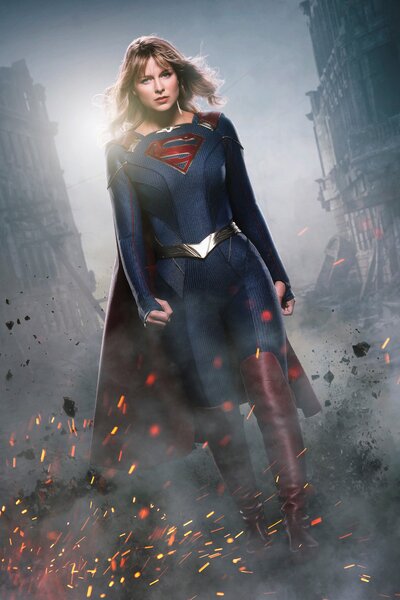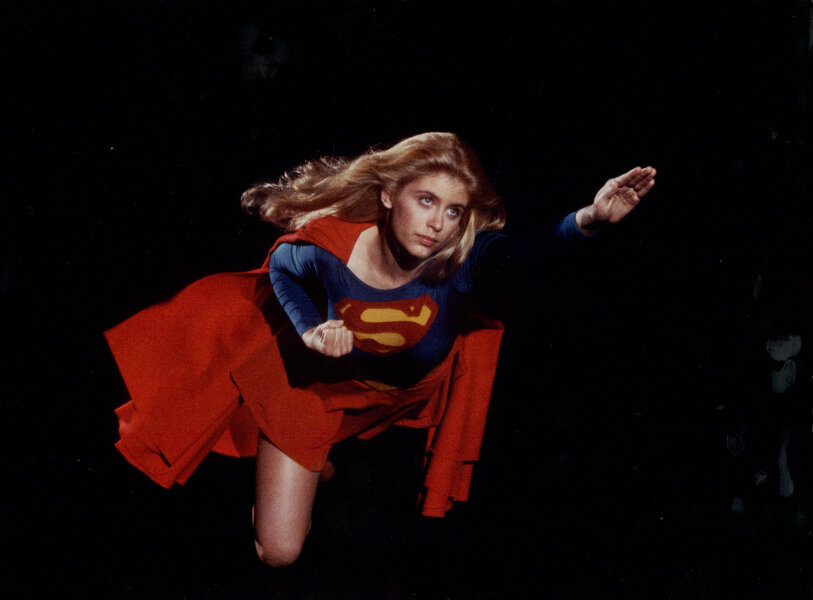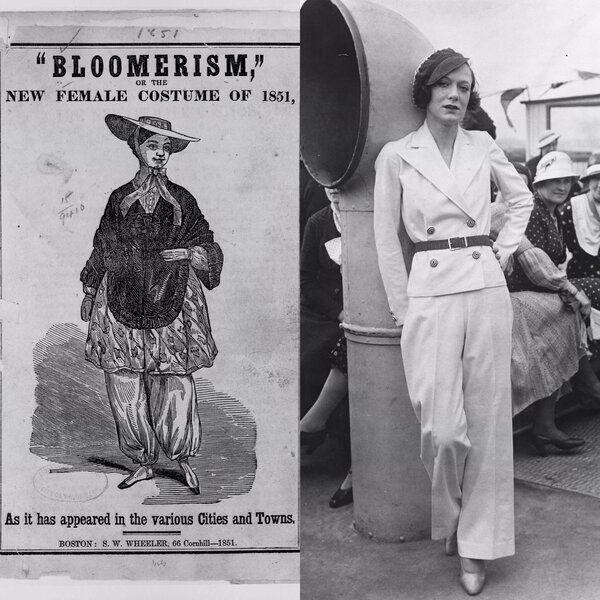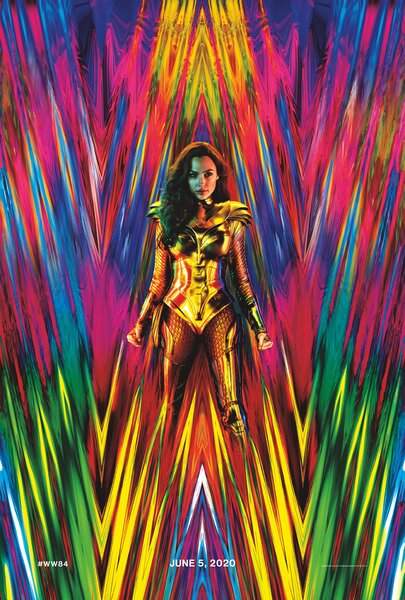Create a free profile to get unlimited access to exclusive videos, sweepstakes, and more!
Why a skirt isn't necessary for Supergirl and Wonder Woman
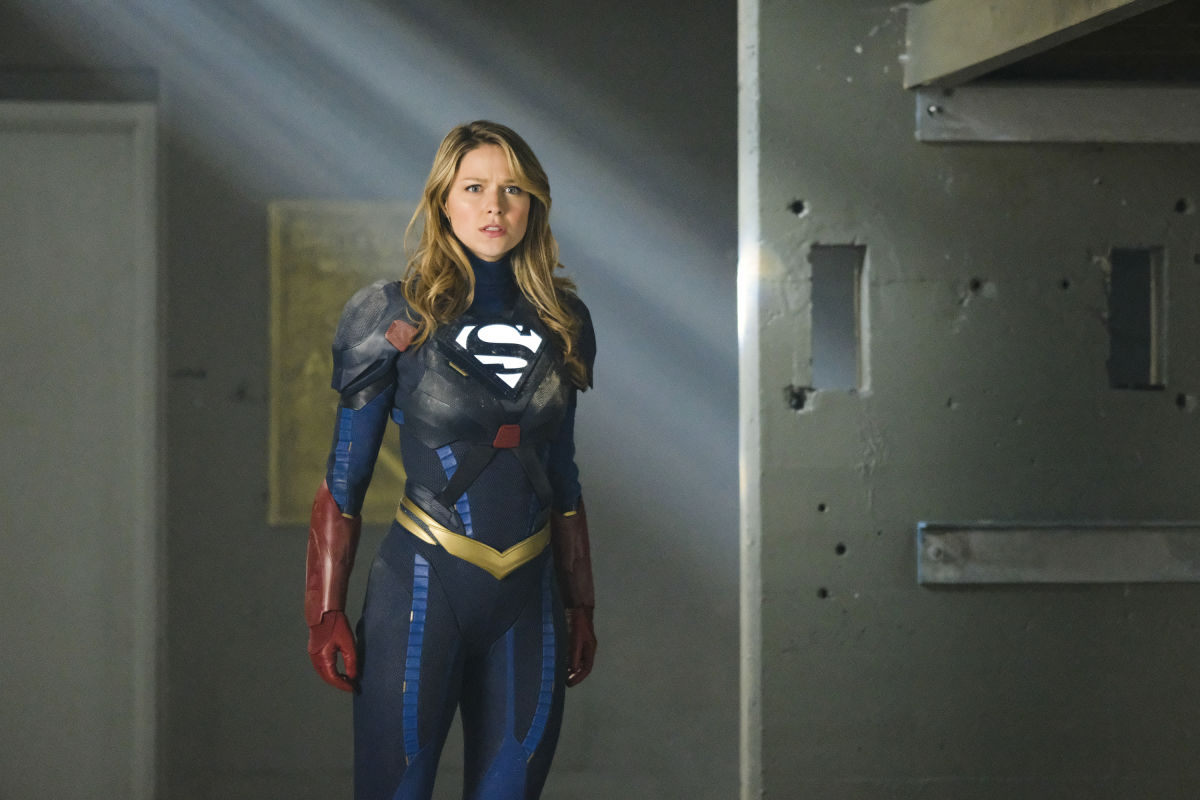
Style ruts happen to the best of us, but when you are a superhero with an instantly recognizable look it isn’t always easy to deviate from expectations. Those with special powers are not resistant to sartorial trends, plus it would be awfully dull if they wore the same thing day in, day out. A whole closet of options presents itself in the regular lives that superheroes lead as reporters or antiquities experts, but their crimefighting costumes can also benefit from an update — and that's something both Supergirl and Wonder Woman are exploring in their forthcoming outings.
Breaking the clothing wheel isn’t always easy, particularly when gender is factored in, but Kara Zor-El (Melissa Benoist) and Diana Prince (Gal Gadot) are finally getting to ditch the skirt.
When Supergirl premiered in the fall of 2015, the necessity of this particular costume detail was up for debate. Sure, the skirt has been part of Supergirl’s costume since her first appearance in 1959, but it isn’t all that practical in terms of the character’s movements and concealing it beneath her (often fitted) office attire. There is also the titillation element, which was partially addressed in the evolution of the design in the pilot episode. The first ensemble Kara tries on consists of bootie shorts and a cut-out crop top, as she proceeds to remark that she “wouldn’t even wear it to the beach.” She has no such qualms about the miniskirt; rather, the main issue at hand for Kara is getting the cape she desires. The design originated from Oscar winner Colleen Atwood — who is also responsible for the superhero costumes on The Flash and Arrow — and as she told Variety in 2015 when explaining the concept of the look, “I feel like there’s a real love for Americana with Supergirl, and I wanted to really embrace that heart of women.”
There is a stylized aspect of superhero costumes, but in recent years authenticity has also become an important design factor. A costume that honors the source material while also fitting in a real world aesthetic is paramount to the overall look. In another interview given that same year, Atwood explained, "In Supergirl, I really liked the 'real' person side of her character and wanted that to 'play' in costume." But as with the comics, in which Kara has worn a number of different looks over the years, it is time for a change.
The Supergirl of the comics sported a variety of apparel over the decades that ditched the skirt and embraced the fashion of each respective era. In the 1970s, she got with the times in hot pants, billowy sleeves, and a plunging top. The cape had a choker detail that was very on-trend. Prior to this, the Barbarella influence was strong in a garment that looked swimsuit-ready, while doubling as a precursor to the iconic cut-out dress worn by Julia Roberts in Pretty Woman.
In 1984, Supergirl hit the big screen with Helen Slater in the titular role. It was a year of leg warmers, mini skirts, preppy influence, and ever-expanding shoulder pads. Some of this explains the overall look of Supergirl's costume, but hers was also noticeably similar to Christopher Reeve’s Superman attire (and it went for $20,000 at auction last year). Prior to the CW series, this is probably the most recognizable of Supergirl’s looks. Despite reading as visually outdated, character recognition is vital to promotional elements. However, it is time to move on, and some of the reasons why the change is happening now mirror how Dress Reformers tried to sell pants all the way back in the Victorian era.In an 1851 editorial for The Lily — the first newspaper in the US edited by and for women — Amelia Bloomer wrote about wearing a new garment: loose pants that could be worn beneath a skirt, which allowed more freedom of movement. Elizabeth Smith Miller has been credited with inventing “bloomers,” but Amelia put them on the map, hence the name. This wasn't seen as a stylish breakthrough, but Bloomer wasn't pushing them on a platform of fashion nor was she holding them up as an ideological symbol of suffrage. Rather, it was the health benefits she emphasized — essentially, a clothing Trojan horse, so as not to upset those who wanted women to remain in restrictive dresses. Riding a bicycle, taking leisurely walks and even looking after children were hampered by the bulky and organ-crushing Victorian attire, and while this didn't revolutionize women's clothing, it was the spark that started the notion that women could wear pants.
Later, when women started wearing adopting slacks in the 1920s and 1930s — Vogue first put pants on the cover in 1917 — it was met with resistance. Marlene Dietrich was refused service at a Los Angeles hot-spot restaurant in 1933 and had to change into a skirt before she would be seated.
But WWII changed everything — not only the number of women in the workplace but also what was considered suitable clothing. Again, underscoring this element of practicality helped to sell it to the rigid members of society.
Cut to the new Supergirl costume that was unveiled just before SDCC. Speaking to SYFY WIRE, Benoist explained that cold night shoots in Vancouver did influence the choice:“Logistically, I needed something a little more practical [because] we're in a cold place and the skirt with stunts didn't always work. But I also think it's a great evolution and we've kind of been thinking about it for a while now."
Executive producer Sarah Schechter referenced the classic Supergirl costume while also shouting out Atwood’s fantastic design. Nevertheless, it was time for a new outfit and Schechter underscored Kara's growth as it now reflects “how she wants the world to see her as matured.” The girlish aesthetic of the skirt was a big part of the original look, whereas the jumpsuit reads as sophisticated.
This isn’t to say that skirts are bad (and everyone is free to love a mini-skirt); however, in this world and with the forthcoming Crisis on Infinite Earths crossover event soon to occur, it makes sense for this particular costume upgrade. Current Supergirl costume designer Victoria J. Auth created this new look with Ironhead Studios and Bill Hargate Costumes. These are the teams who are behind the other recent superhero suits of the "Arrowverse," so Kara’s look visually aligns with this vision.
Breaking free of the overall aesthetic of the films that have come before it, Diana Prince in the Wonder Woman 1984 teaser poster is dripped in gold with a bold mind-bending color palette. Unlike the CW’s Supergirl, which looked to the past for costume inspiration, Zack Snyder’s incarnation of Wonder Woman eschewed the colorful star shorts for Amazonian leather. A muted blue leather skirt (which is briefly replaced by 1910s period fuller skirt attire in Wonder Woman as designed by Lindy Hemming) has been central to this version of Diana, but she is also ditching the barely-there garment in favor of an all-gold ensemble. There's no skirt necessary for the textured leggings, thigh-high boots, and gold armor fit for Westeros — also designed by Hemming.
1984 was the year Supergirl launched into movie theatres, but it also happens to be the year Diana Prince finds herself in for the next Patty Jenkins-helmed adventure. Considering how long both Supergirl and Wonder Woman have been around, it would be terribly repetitive if they wore the same thing year after year. Meanwhile, balancing kitsch fun with gritty realism is a hard line to walk, but both costumes are hitting the mark. In losing the skirt, both get a fresh, fun, and practical wardrobe upgrade that hits the superhero sartorial trifecta.
